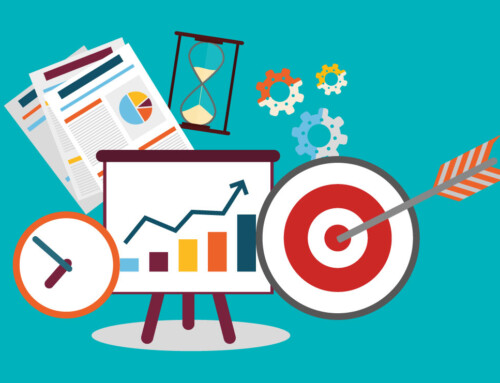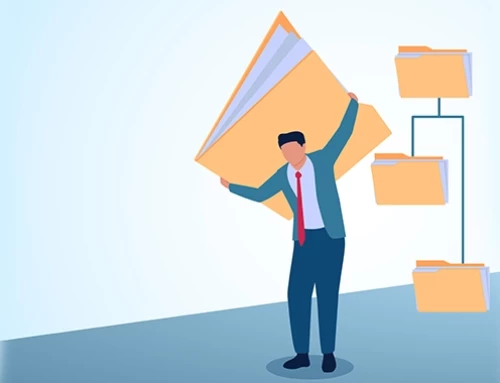Contents
5 Best Automation Strategies to Enhance Efficiency in Law Firms
In today’s fast-paced legal landscape, law firms face increasing pressure to deliver high-quality services while managing costs and improving efficiency. The adoption of automation strategies has emerged as a game-changer, enabling firms to streamline operations, reduce administrative burdens, and enhance client satisfaction. By leveraging cutting-edge technologies, law firms can automate routine tasks, optimize workflow processes, and focus more on strategic legal work. Law firm automation has revolutionized the way legal services are delivered, increasing efficiency and accuracy while freeing up valuable time for attorneys to focus on more strategic tasks. This article explores the five best automation strategies that can significantly boost efficiency in law firms, ensuring they stay competitive in an evolving industry. From document automation to client relationship management, discover how these strategies can transform your legal practice.
Automation in law firms can significantly enhance efficiency, reduce errors, and free up valuable time for lawyers and support staff to focus on higher-value tasks. Here are five key automation strategies that can drive efficiency in legal practice:
Document Automation
Document automation involves using software like RunSensible to create standard legal documents such as contracts, wills, and pleadings automatically based on inputted data. It significantly cuts down the time spent on creating repetitive legal documents. By using pre-set templates, legal professionals can quickly generate documents without starting from scratch each time. This efficiency allows lawyers and their staff to focus more on complex and high-value tasks, ultimately enhancing overall productivity.
Manual drafting often leads to human errors and inconsistencies, which can have serious repercussions in legal practice. Document automation ensures that each document is created with the same level of accuracy, reducing the likelihood of mistakes. Automated systems can standardize language and format, ensuring consistency across all documents.
Legal standards and regulations are constantly evolving. Document automation tools can be updated to reflect the latest changes in law, ensuring that all generated documents are compliant with current legal requirements. This reduces the risk of non-compliance and the potential legal issues that can arise from outdated information.
E-Discovery Automation
E-discovery automation tools help manage the process of collecting, reviewing, and producing electronic documents during litigation. These tools are designed to streamline the e-discovery process, making it more efficient and accurate. Using e-discovery automation tools speeds up the discovery process significantly. Manual review of electronic documents can be time-consuming, but automated tools can quickly sift through large volumes of data to identify relevant information. This speed is crucial in litigation, where timely access to documents can influence the outcome of a case.
Moreover, e-discovery automation tools improve accuracy in identifying relevant documents. By utilizing advanced algorithms and machine learning, these tools can accurately pinpoint the necessary documents, reducing the chances of missing critical information or including irrelevant data. This precision ensures that the discovery process is thorough and reliable.
Another significant benefit is the reduction in costs associated with manual document review. Manual review requires extensive labor and time, which translates to higher costs. Automation tools reduce the need for manual labor, thus lowering the overall expenses involved in the discovery process. This cost efficiency is particularly beneficial for large-scale litigations involving vast amounts of electronic data.
When implementing e-discovery tools, it is essential to choose ones that offer advanced search capabilities, including keyword and concept search. These features enhance the ability to locate pertinent documents quickly and accurately. Advanced search capabilities can make a substantial difference in the efficiency and effectiveness of the discovery process.
Additionally, training your staff on how to use these tools effectively is crucial. Even the most advanced e-discovery tools will not reach their full potential without proper usage. Training ensures that your team can navigate the tools efficiently, leverage their full capabilities, and ultimately maximize the benefits of e-discovery automation.
Workflow Automation
Workflow automation streamlines routine processes such as client intake, billing, and case management by automating repetitive tasks. By implementing automation, legal professionals can ensure that these essential functions are carried out efficiently and with minimal manual intervention.
Enhancing productivity is one of the primary benefits of workflow automation. By reducing the time spent on administrative tasks, legal professionals can focus more on substantive work that requires their expertise. This shift not only improves the efficiency of the practice but also frees up time for lawyers to engage in more strategic activities.
Another significant advantage is the consistency and accuracy that automation brings to processes. Manual handling of routine tasks often leads to inconsistencies and errors, which can have serious implications in legal practice. Workflow automation ensures that each task is performed uniformly and correctly every time, thereby minimizing the risk of mistakes and maintaining high standards of quality.
Workflow automation improves client satisfaction by speeding up service delivery. Clients expect prompt and efficient service, and automation helps meet these expectations by accelerating processes such as client intake and billing. Faster service delivery enhances the overall client experience and can lead to increased client loyalty and positive referrals.
To successfully implement workflow automation, start by mapping out your existing workflows and identifying bottlenecks that can be automated. Understanding your current processes and pinpointing areas where automation can make a significant impact is crucial for effective implementation.
Using legal-specific workflow automation software such as RunSensible that integrates with your existing systems is also vital. This legal-specific software is designed to meet the unique needs of legal practices, offering features tailored to common legal workflows. Integration with existing systems ensures a seamless transition to automated processes and allows for better data management and workflow continuity.
Client Communication Automation
Automating client communications can encompass a range of activities, such as sending automated emails, appointment reminders, and updates on case progress. These automated communications help ensure that clients are consistently informed and engaged throughout their legal journey.
One of the primary benefits of automating client communications is that it keeps clients informed and engaged without requiring additional effort from the legal team. By automating routine updates and reminders, legal professionals can focus on more complex tasks, while clients remain in the loop about important developments.
Automated communications also reduce the risk of missed communications and follow-ups. Manual tracking of communication schedules can lead to oversights and delays. Automation ensures that all necessary communications are sent out timely, maintaining a consistent flow of information between the legal team and clients.
Furthermore, automating client communications can significantly improve overall client satisfaction and retention. Clients appreciate regular updates and timely reminders, which enhance their experience and trust in the legal service provided. Satisfied clients are more likely to remain loyal and recommend the service to others.
To effectively implement automated client communications, set up automated email sequences for different stages of the client journey. Tailoring these sequences to specific milestones and events in the client’s case can ensure relevant and timely communication, enhancing the client’s experience.
Using case management tools like RunSensible that offer automation features tailored for legal practices is essential. These tools are designed to handle the specific needs of legal client management, providing functionalities that streamline communication processes and integrate seamlessly with other legal software. This integration ensures that client communications are managed efficiently and effectively.
Legal Research Automation
Legal research tools powered by artificial intelligence (AI) can quickly analyze vast amounts of legal data and provide relevant case law, statutes, and legal precedents. These AI-driven tools streamline the research process, making it more efficient and thorough.
One of the primary benefits of AI-powered legal research tools is that they drastically reduce the time needed for legal research. Instead of manually sifting through countless documents, lawyers can rely on AI to quickly identify and retrieve pertinent information. This efficiency allows legal professionals to allocate more time to other critical tasks.
These tools also enhance the accuracy and comprehensiveness of research findings. AI algorithms can analyze and cross-reference a vast array of legal documents, ensuring that no relevant information is overlooked. This thoroughness improves the quality of research and helps lawyers build stronger cases.
AI-powered research tools allow lawyers to focus on analysis and strategy rather than data gathering. With the heavy lifting of data retrieval handled by AI, legal professionals can concentrate on interpreting the information and developing effective legal strategies.
To maximize the benefits of AI-powered legal research, invest in tools that offer advanced features like natural language processing and predictive analysis. These capabilities enable the tools to understand and interpret complex legal queries, providing more accurate and relevant results.
It is also important to regularly update your research tools to ensure access to the latest legal information. Legal standards and precedents constantly evolve, and keeping your tools up-to-date ensures that you are working with the most current data. Regular updates help maintain the reliability and accuracy of your research findings.
In conclusion, by implementing these automation strategies, such as those offered by RunSensible, law firms can significantly enhance their efficiency, reduce operational costs, and improve the quality of their legal services. Embracing automation not only allows legal professionals to focus on more complex and high-value tasks but also ensures a competitive edge in the rapidly evolving legal industry. Automation in a large law firm can streamline complex workflows, reduce administrative overhead, and improve overall service delivery, making the firm more competitive in the legal market.
Disclaimer: The content provided on this blog is for informational purposes only and does not constitute legal, financial, or professional advice.







